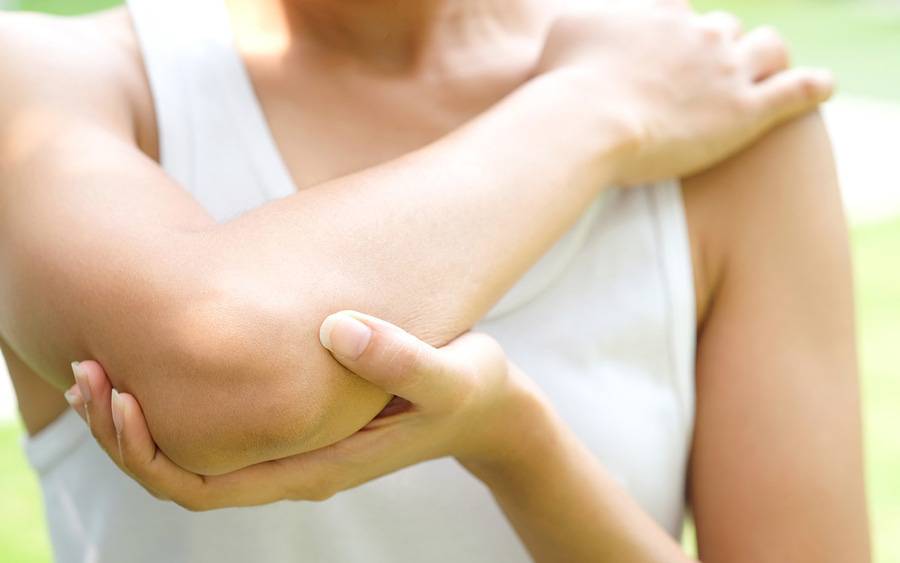What Are the Best Treatments for Tennis Elbow?
Tennis elbow is caused by overuse of the forearm muscles

Tennis elbow is caused by overuse of the forearm muscles
You don’t have to play tennis to get tennis elbow. It’s a condition that occurs when you overuse your forearm muscles.
This overuse can make the tendons on the outer side of the elbow inflamed or cause small tears, which leads to pain and tenderness. Fortunately, there are many treatments that can help relieve the pain.
What causes tennis elbow?
To treat tennis elbow, it helps to know a bit about elbow anatomy. The elbow joint has three bones: The upper arm bone (humerus) and two forearm bones (radius and ulna). Muscles, ligaments and tendons keep the elbow joint stable. The bony bump on the outside of the elbow is called the lateral epicondyle.
“The clinical term for tennis elbow is lateral epicondylitis, and it involves the muscles and tendons that help stabilize your wrist when you straighten your elbow,” says Michael Hadley, MD, a family medicine physician with expertise in sports medicine at Scripps Coastal Medical Center Encinitas. “People who play racquet sports, such as tennis or pickleball, repeatedly use these muscles when they swing at the ball.”
The rising popularity of pickleball has been linked to an increase in cases of tennis elbow. This may be due to new players starting the sport without adequate conditioning, warm-up or focus on proper form. Because pickleball paddles are lighter than tennis racquets, players often grip them more tightly, which can place added strain on the forearm tendons.
“But tennis elbow can also result from any repetitive activity that strains the forearm or uses repetitive extension of the wrist or hand,” Dr. Hadley adds.
Other common triggers include using hand tools, gardening, sewing, painting and construction work. Sometimes, the exact cause is not clear.
How to recognize symptoms of tennis elbow
Tennis elbow is most common in people ages 30 to 50, but it can affect anyone.
Symptoms often begin with mild pain or a burning sensation on the outer part of the elbow. This discomfort may gradually worsen. You may notice a weakened grip or elbow pain, especially at night.
Tennis elbow treatments: quick relief
Treatments for tennis elbow depend on the severity of the condition and how long the symptoms have persisted.
For mild tennis elbow, rest and avoiding activities that trigger the pain can often provide relief.
Here are treatments that may help:
Rest and bracing: Wearing a specialized elbow brace can help reduce stress on the injured tendons.
“Braces designed specifically for tennis elbow are available in many sporting goods shops or online. The brace may need to be worn consistently for several weeks to allow proper healing,” Dr. Hadley says.
Non-steroidal anti-inflammatory drugs (NSAIDs): Over-the-counter medications like ibuprofen can help reduce pain and swelling.
Medical treatment
If pain lasts more than a few weeks, it’s important to see your doctor. They may do a physical exam and order imaging tests like X-ray to rule out fractures or other problems.
Your doctor may recommend one or more of the following treatments for tennis elbow.
Physical therapy: A therapist can guide you through exercises that improve flexibility, strength and range of motion. They may also use techniques like ultrasound or massage, to support healing in the affected muscles and tendons.
As part of your treatment, the therapist will assess how you move your arm and wrist. They might recommend adjustments to avoid further irritation. For instance, you could use your shoulder and upper arm muscles more to help reduce strain on your elbow.
Corticosteroid injections: These can help reduce swelling and relieve pain. However, if you resume activity without adjusting how you move your arm and wrist, the issue may come back.
Extracorporeal shock wave therapy: Shock wave therapy uses high-energy sound waves directed at the painful area. These sound waves help stimulate the body’s natural healing processes. While it may be helpful for some people, it might not work for everyone.
Platelet-rich plasma: This treatment uses your own platelets to promote healing in the injured tendons. The platelets are drawn from your blood and then injected into the affected area.
This therapy is an option for some people. However, many insurance providers still see it as experimental. Its effectiveness can vary from patient to patient.
Surgery: Most people can find relief from tennis elbow pain without surgery. If surgery is needed, your doctor will refer you to an orthopedic surgeon. Many elbow surgeries can be done as outpatient procedures. This means you can go home the same day.
Preventing tennis elbow
Making some simple adjustments to your activities can help prevent tennis elbow from recurring:
Strengthen and stretch your muscles: Doing wrist and forearm exercises can help keep your muscles strong and flexible. A physical therapist can recommend the right exercises for you.
Use proper technique: If you play tennis or other racquet sports, use the right size racquet. Have a coach or therapist check your form. They can help you find ways to move better and reduce strain on your arm and wrist.
“Sometimes, just making a small change to how you use your wrist or position your arm can make a major difference,” says Dr. Hadley. “It’s worth it to invest in a session with a physical therapist or athletic coach to help prevent elbow problems from affecting your work or play.”
Take frequent breaks: Avoid prolonged repetitive motions and take breaks from activities that require continuous gripping or wrist bending.
Protect your elbow: Use tools with large, padded grips and avoid gripping so hard that you put a lot of tension in your hands and wrists.